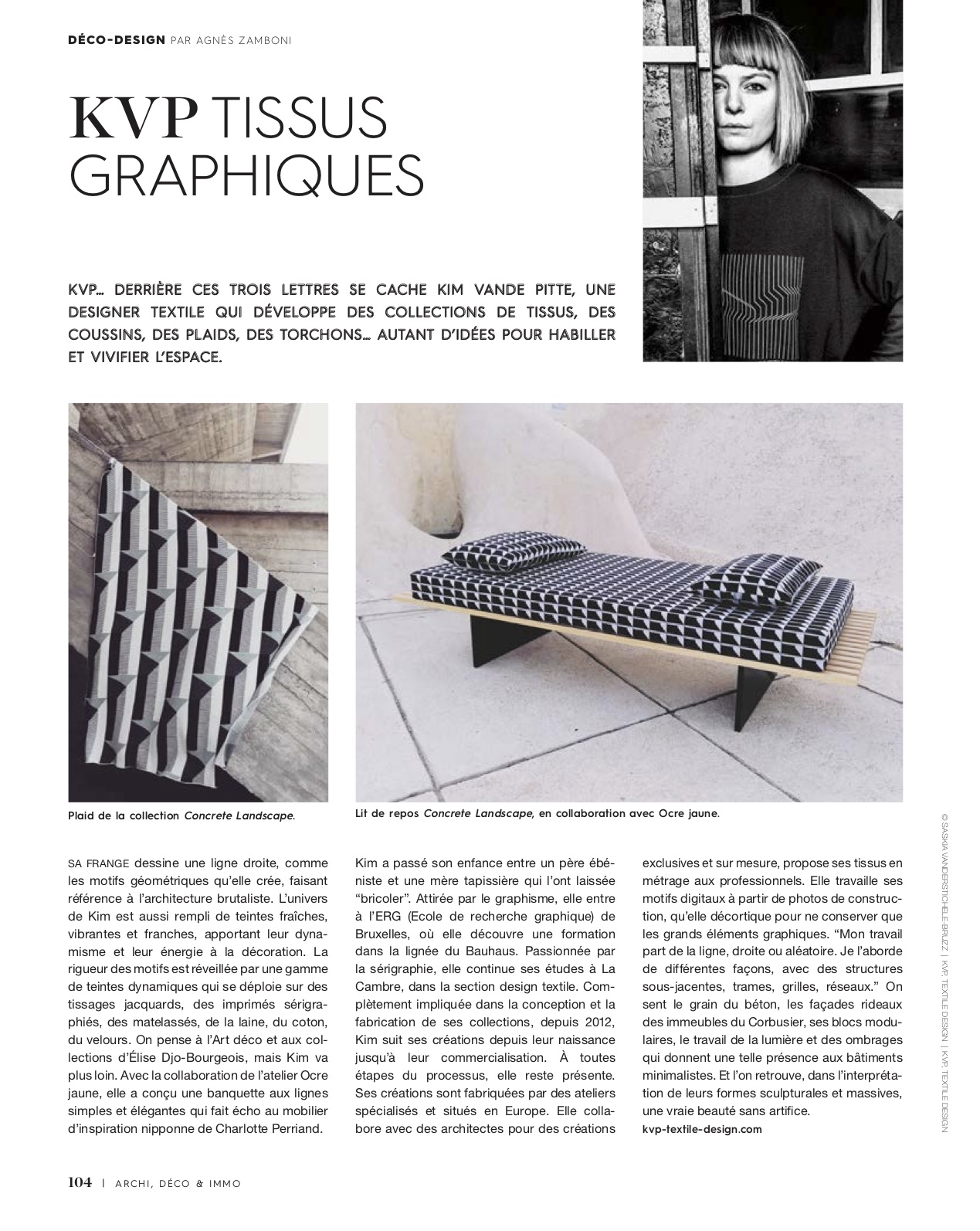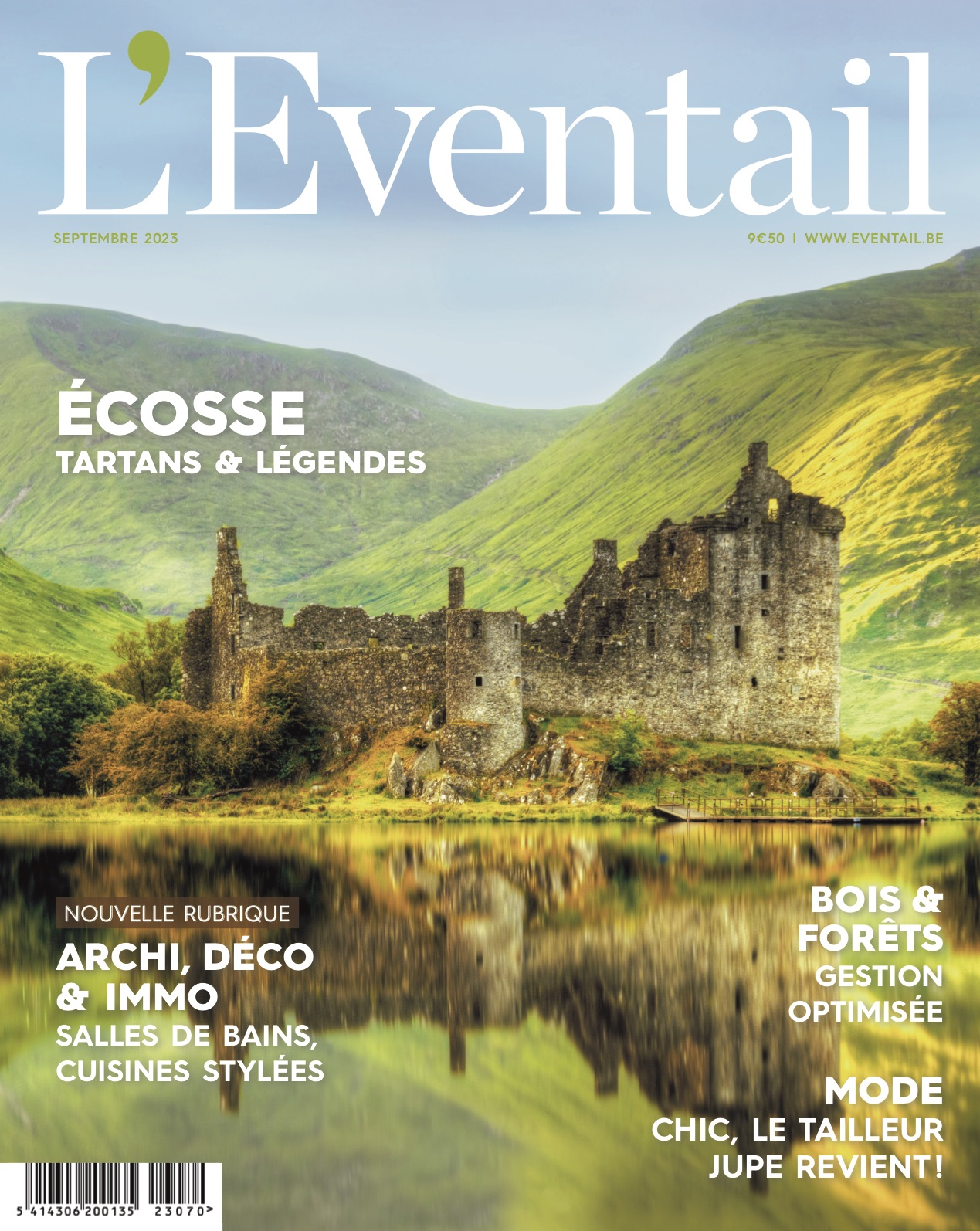Project : L’éventail 09.23
Publication in L’éventail
September 2023

KVP – BEHIND THESE THREE LETTERS HIDES KIM VANDE PITTE, A TEXTILE DESIGNER WHO DEVELOPS COLLECTIONS OF FABRICS, CUSHIONS, PLAIDS, TEA TOWELS… ALL IDEAS FOR DRESSING UP AND INVIGORATING YOUR INTERIOR.
HER FRINGE draws a straight line, like the geometric patterns she creates, referring to Brutalist architecture. Kim’s world is also full of fresh, vibrant and bold colours, bringing their dynamism and energy to the decor. The rigour of the patterns is awakened by a range of dynamic shades that unfold on jacquard weaves, screen prints, quilts, wool, cotton and velvet. It’s reminiscent of Art Deco and the work of Élise Djo-Bourgeois, but Kim goes even further. Working with the Ocre jaune studio, she has designed a bench seat with simple, elegant lines that echo Charlotte Perriand’s Japanese-inspired furniture.
Kim spent her childhood with her father, a cabinetmaker, and her mother, an upholsterer, who left her to « tinker ». Attracted by graphic design, she enrolled at the ERG (Ecole de recherche graphique) in Brussels, where she was trained in the tradition of the Bauhaus. Fascinated by screen printing, she continued her studies at La Cambre, in the textile design section. Since 2012, Kim has been fully involved in the design and manufacture of her collections, following her creations from their inception through to marketing. She remains present at every stage of the process. Her creations are made by specialist workshops located in Europe.
She works with architects on exclusive, made-to-measure creations, and offers her fabrics in yardage to professionals. Her digital patterns are based on photos of buildings, which she analyses to retain only the main graphic elements. « My work starts with the line, whether straight or random. I approach it in different ways, with underlying structures, grids and networks. You can feel the grain of the concrete, the curtain walls of Le Corbusier’s buildings, his modular blocks, the work with light and shadows that give such a presence to minimalist buildings. And in the interpretation of their massive, sculptural forms, we find a real beauty without artifice.
Agnès Zamboni
